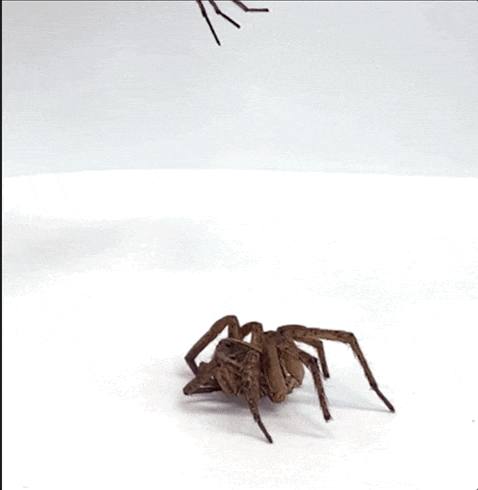What is behind the dramatic decline in bee populations? Moths pollinate clover flowers at night, after bees have gone home. If insects feel pain, should we reconsider how we experiment on them?
Keeping us connected to the world of bees
Is $2 per month within your budget? Consider becoming a Friend of the Bee Report!
Was this email forwarded to you? Sign up here.
Conservation
Photo: Winfree Lab
What is behind the dramatic decline in bee populations?
(ScienceDaily, Rutgers University) A dramatic decline in the bee population at fruit farms in New Jersey and Pennsylvania has scientists wondering whether it is a natural phenomenon or a warning about a future threat to the world’s food supply. The study occurred over an eight-year period, too short a time for scientists to sound the alarm just yet. They said longer-term studies would need to be conducted to determine whether the decline represents a true drop in numbers of bees or a normal variation over a larger cycle.
Rare plants attract rare bees and birds in urban gardens
(Phys.org, Dartmouth College) A new study on urban gardens in northern California finds rare plants attract rare bees and birds. Women, older gardeners and gardeners who live near the urban gardens planted more rare plants. The rare species found in the gardens included the leafcutting bee, poppy, Bachelor’s button, purple finch and taro. “What is rare in an urban garden can be quite common elsewhere.”
Rusty patched bumble bee spotted during Backyard Bumble Bee Count
(WTTW) The bee was logged at the outset of the fourth annual Backyard Bumble Bee Count, which runs through August 1. The crowdsourced data gathered during the backyard count will be used to document bumble bee occurrence and abundance.
Breeding yellow banded bumble bee queens
(Twitter, Wildlife Preservation Canada @WPCWild911) “We are very excited to be breeding Special Concern yellow-banded bumble bee queens again as we took a break from breeding this species last year and it is our main focus for the Bumble Bee Recovery Program.”
‘Murder hornets’ have a new common name: Northern giant hornet
(ScienceNews) That’s what the Entomological Society of America recently announced as the preferred plain-English common name for the big, orange-and-black Vespa mandarinia. The choice has at least as much to do with people as it does with hornets.
‘Zoe’ becomes the world’s first named heat wave
(Scientific American) The world’s first named heat wave hit Seville, Spain, this week, pushing temperatures past 110 degrees Fahrenheit and earning the most severe tier in the city’s new heat wave ranking system.
Economics
Photo: Esteban Felix, Associated Press
Explosion of mites leads to worst loss of Canada’s bee colonies
(National Observer) Nearly half of Canada’s honey bee colonies didn’t survive the winter, the largest rate of colony loss in the country in the last 20 years, according to preliminary data.
Science
Photo: Jeff Kerby
Moths pollinate clover flowers at night, after bees have gone home
(ScienceNews) The discovery highlights what researchers may be missing during the night shift of plant pollination, including a previously unknown benefit the moth pollination bestows on the clover: a boost in seed production.
If insects feel pain, should we reconsider how we experiment on them?
(Popular Science) Some scientists want to grant more invertebrates ethical consideration, questioning long-held assumptions on consciousness.
(Twitter, Sabrina Rondeau @SabRondeau) “Up to 29 #pesticides were found per soil sample, suggesting risk of synergistic effects. Overall, the % of detection, residue levels, and number of pesticides per sample were highest for apple orchard soils compared to soils from diversified farms.” Original paper
Moths enlist additional troops in an evolutionary arms race
(ScienceDaily, Florida Museum of Natural History) A new study shows that ultrasound-producing moths are far more widespread than previously thought, adding three newly discovered sound-producing organs, eight new subfamilies and potentially thousands of species to the roster.
Scientists expand entomological research using genome editing
(ScienceDaily, Hiroshima University) Researchers have developed a work-flow method, called Fanflow4Insects, that annotates gene functions in insects. In functional annotation, scientists collect information about a gene’s biological identity. The team’s new method uses transcribed sequence information as well as genome and protein sequence databases. The functional annotation information that their workflow provides will greatly expand the possibilities of entomological research using genome editing.
Society/Culture
Image: Ann Sanderson
Your garden can help save the rusty patched bumble bee
(The Star) Attracting pollinators to your garden should be straightforward but it can become complicated by plant types, blossom times and the pollinators you want to attract .
Bumble Bee Atlas survey blitz this weekend
(Twitter, Bumble Bee Atlas @bumblebeeatlas) “We hope you’re gearing up to participate in the Atlas Blitz this weekend! If you participate, make sure to submit your data to Bumble Bee Watch by August 7th so it can count towards crowning winners in our three categories.”
Wild Life Drawing Online: Bumble bees
(Twitter, Vivek Nityananda @VivekNityananda) “Remember to sign up for this class. We’ll draw bees and chat about them.”
One More Thing…
Wasn’t sure exactly where to include this story in the Bee Report. So I’m going to just leave it right here for you...
Engineers get a grip with ‘necrobotic’ spiders
(Rice University) Mechanical engineers are showing how to repurpose deceased spiders as mechanical grippers that can blend into natural environments while picking up objects, like other insects, that outweigh them.








